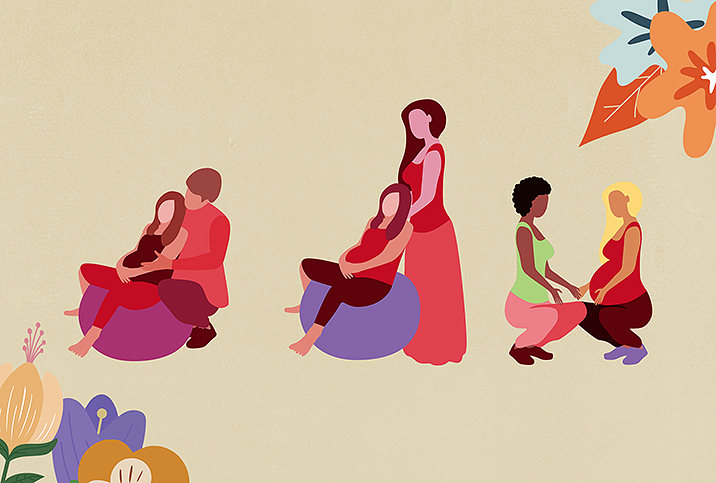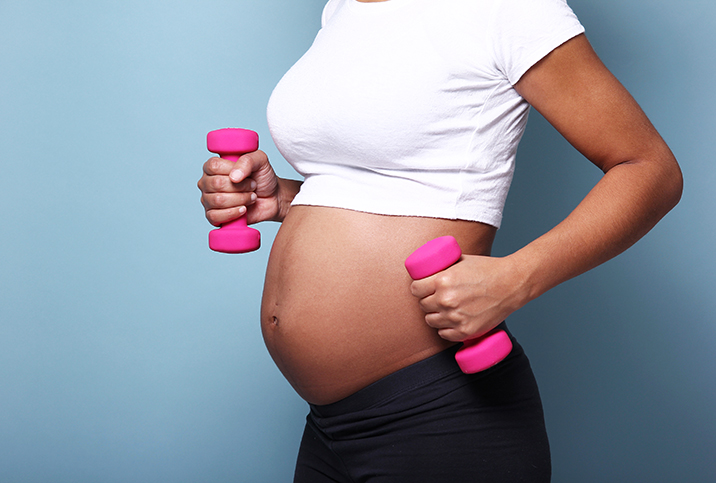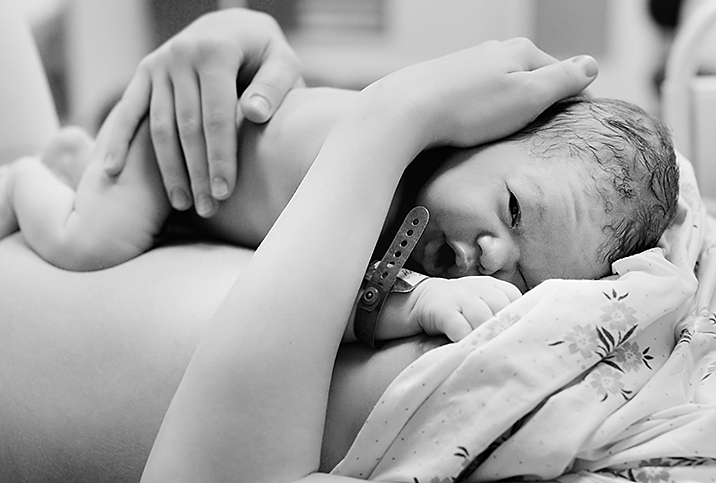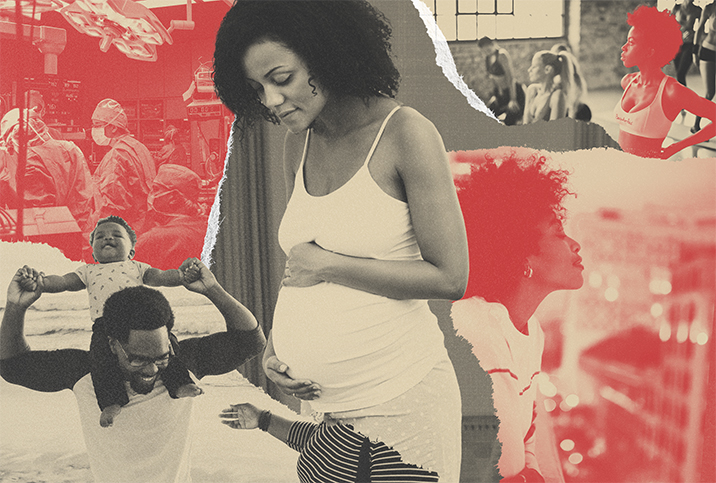What Are Birthing Balls and Do They Really Work?

In the third trimester of pregnancy, especially from week 37 on, it's important to position the baby deeper into the pelvis to align them to get ready for birth in order for a better labor experience. Movement helps to bring them downward, and this can be achieved by walking and being active as well as doing various exercises with a birthing ball.
If you don't already know, these traditionally round and smooth balls (like yoga balls), often found in the corners of playrooms and gyms, can be used during childbirth. Either purchased for your home or utilized in the delivery room, these balls are an accessory that can encourage movement, comfort and ease during a woman's pregnancy and labor. Round birthing balls can be used throughout pregnancy as a chair, much like a balance ball, keeping your posture steady as the soft surface supports the spine, which can be more comfortable than sitting in a chair.
How to use a birthing ball
The most common and effective exercises that are recommended by midwives prior to labor are gently bouncing up and down, rocking backward and forward to shift your weight to each thigh and tilting your pelvis to and fro. If you want to open your pelvis while lying down, you can do this by arranging your legs on either side of a smaller-sized peanut ball. A peanut ball is shaped like a peanut, as it is two balls joined together with a dip in the middle, so you can get your legs around it. The peanut ball is ideal for those who have an epidural during labor or have mobility issues that prevent them from sitting on the round ball.
'A birthing ball can relieve back pain, keep the birthing parent in good posture and help a baby engage with the pelvis.'
Parents-to-be can sit upright on top of the ball or lean their upper body on the ball from a squatting position either during or between contractions, and the ball will gently move with them to help with the discomfort. The peanut ball is used between the mother's legs, a bit like a pregnancy pillow, to keep the hips open while lying on their side.
During the time from conception to birth, "a birthing ball can relieve back pain, keep the birthing parent in good posture and help a baby engage with the pelvis," explained Mindy Cockeram, a birth educator trained by the National Childbirth Trust and author of "Cut Your Labor in Half: 19 Secrets to a Faster and Easier Birth." Essentially, she said, the lower the baby is in the pelvis, the faster the birth. Midwives are able to measure this. Ideally, labor will start at a fetal station of 0, as opposed to -3, -2 or -1, which means it is higher up than the pelvis and not fully engaged and ready to be pushed out.
Finding the ideal ball is crucial
While some hospitals offer birthing balls for patients, not all have them readily available. One thing to consider before buying a birthing ball is picking the right size, which depends on your height. Those who are 5 feet 10 inches or under would need a 65cm ball, while anyone taller would be better off with a 75cm ball. If your legs are at a 90-degree angle while you're seated on the ball, then it is the right height for you.
Is a birthing ball for everyone?
While Cockeram is a huge advocate for the ball as a birthing tool, not every parent-to-be will find them useful during childbirth. Vicki Smith, mother of two and blogger at The Mummy Bubble, said, "I found it difficult to get comfortable on the ball, and actually it was more annoying than anything else trying to balance on it while going through a contraction. I also found it made no real difference to my labor, certainly not compared to things like gas and air. I found it easier to deal with the contractions when leaning on the bed and taking gas and air. This was really the only thing that helped me with the contractions."
Mandi Morrison, a mother of seven and blogger at Big Family Organised Chaos, used a birthing ball for the first time in 2005, while in labor with her fourth child. She loved it so much that she used it while giving birth to her fifth, sixth and seventh as well. "I loved the fact that you could sit down without feeling uncomfortable. It moved with you, and you felt as if you were moving constantly, but without the pulling sensation of labor that I felt when standing up," she explained. "This definitely took some of the pressure off and helped my labors to progress smoothly. In fact, two of my children actually came out in their sac, and no intervention was required."
'It's easier to keep mobile on the birthing balls, which is a key part in progressing during labor.'
Midwives can see a difference in the labor ward when a patient is happy using a birthing ball, too. "There is evidence to suggest that during the first stage of labor, birthing balls can help to shorten the amount of time by around an hour or so," explained Sinead Samuels, a midwife and adviser for the midwifery and pediatrics app, Juno. "This is primarily to do with the fact it's easier to keep mobile on the birthing balls, which is a key part in progressing during labor." While she's never witnessed any issues with birthing ball use during labor, her advice is for anyone with joint, back or mobility problems to speak to a specialist to check if the balls are suitable for them to use.
While birthing balls can be used before and during labor, they can also be used postpartum to do gentle exercise to help the body recover from delivery and gain strength, once a doctor advises it is safe to do so.
So next time you see a bouncing ball, don't assume it's only being used as a child's toy. It could have been an accessory that helped birth the child, too.


















